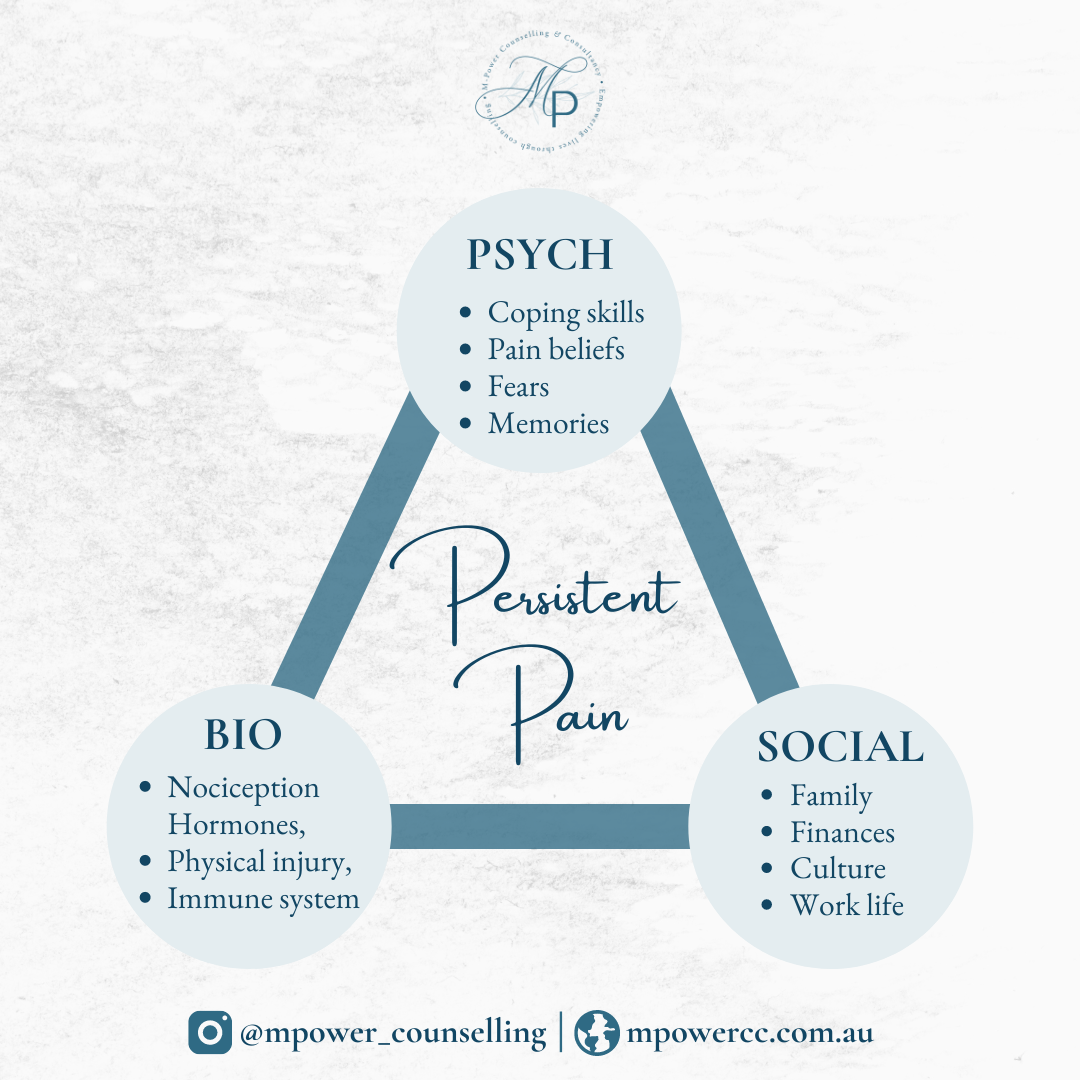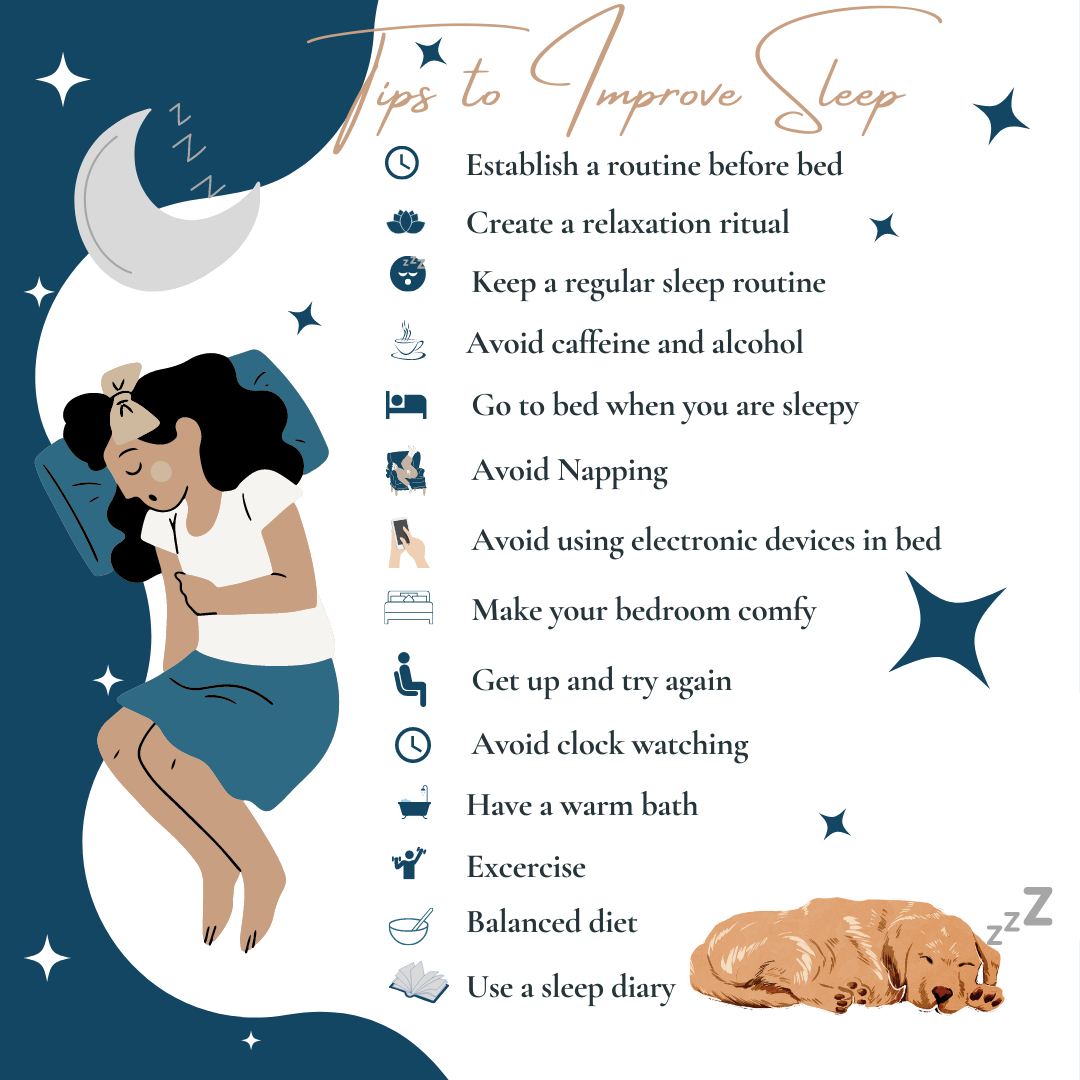The Biopsychosocial Nature of Pain
What is Pain?
The word “pain” can be defined as an unpleasant sensation that is associated with actual or potential tissue damage. The feeling of pain can come from many different sources, including tissue injury, inflammation, nerve injury, and other medical conditions. Pain can vary in intensity from mild to intense and can vary in duration. Pain is a physical sensation felt by the body but is not limited to pain. There are three different types of pain: somatic pain, visceral pain, and neuropathic pain. Somatic pain, also known as nociceptive pain, is the result of damage done to tissue in response to external stimuli. Visceral Pain is felt in response to signals from the autonomic nervous system that are transmitted through the nerves in the abdomen or pelvis.
What is Chronic Pain?
Chronic pain is defined as any pain lasting for more than 3-6 months, excluding minor aches and pains. Pain is one of the most difficult aspects of an illness, or injury. Not only is pain itself unpleasant, but it can also cause other medical issues. For instance, pain leads to changes in the brain’s electrical activity which leads to changes in mood and sleep patterns. Furthermore, chronic pain can disrupt the function of nerve cells, which could lead to physical damage.
Bio- psycho -social nature of pain
Pain is a complex phenomenon that is not limited to the physical realm. To properly understand it, one needs to take into consideration the biological, psychological, and social aspects of pain. The notion of the biopsychosocial nature of pain was developed by Dr. Bob of the World Health Organization in 1972 to promote a balanced approach to pain management that includes three key factors: biological, psychological, and social factors.
The biological aspect is the physiological reactions in our body when we are inflicted with an injury. The psychological aspect includes our thoughts and feelings about pain and how they may affect our ability to cope with it. And the social aspect addresses the physical and emotional environment that we experience pain. Whilst, the cause of pain may vary for each individual, the biopsychosocial nature of pain maintains that all sources of pain are interconnected. The biopsychosocial model of pain management recognizes this interrelatedness of these varied influences — physical, emotional, and social — and how they affect pain.
Conclusion
In conclusion, the bio-psycho-social nature of pain is a multifaceted phenomenon that can be influenced by so many biological, psychological, and social factors. Pain is a complex experience. Good pain management practices should consider all these influences on a person’s experiences of pain. Such an understanding leads to the potential for better management, and prevention strategies targeting many levels, which improves pain outcomes.
This approach helps us clinicians better understand why pain continues and how to overcome it, leading to long term changes in pain symptoms. We want to give you the tools and knowledge to manage your pain and support you through the process.
So, how does it work?
In conjunction with your medical treatment for chronic pain, I will use psychological therapies to teach you techniques to manage, and control your pain, whilst re-engaging in activities to improve your functionality and quality of life.
I offer an individualized approach in accordance with the results of your initial assessment, presentation, and value-based goals. I support you through a series of phases to help you reach your goals. The initial stage is psycho-educational with explanations of pain along with value-based goal setting, with an emphasis on acceptance of pain rather than being pain free. In the next stage – activity scheduling, I will gradually assist you to re-engage with activities that you previously avoided due to pain. I integrate cognitive restructuring to encourage you towards more favourable coping strategies. The final stage involves the use of different therapeutic methods to handle pain more effectively, including progressive muscle relaxation, meditation, mindfulness, exercise, as well as an identification of various social and environmental dynamics surrounding pain, and how your reactions and the actions of others influences your pain.
Please reach out if you want to know more about how this approach can help you.



